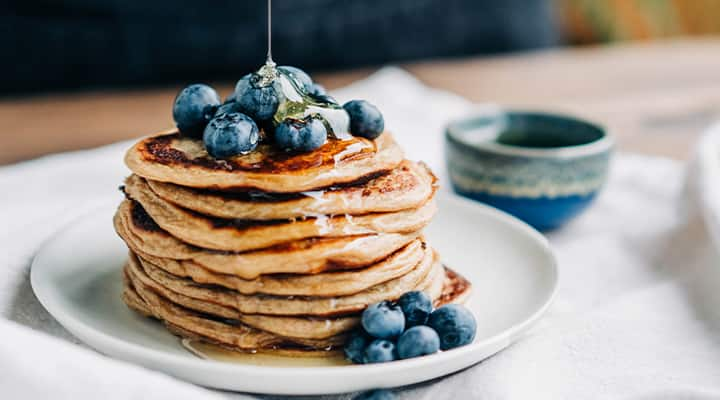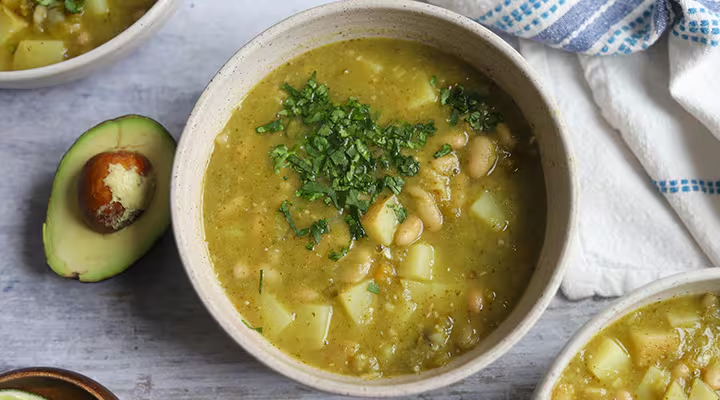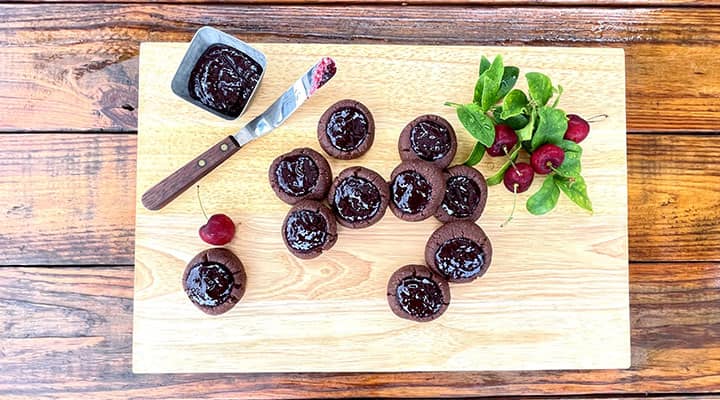
Delish Pumpkin Pie Dip
Published: September 2022
Fall is known for its foliage—those amazing displays of color in plants and tree leaves as the weather cools. But fall is also known for its flavors, most notably pumpkin, apple and cinnamon. You can bring those flavors into your home with an easy and delicious pumpkin pie dip recipe that serves up a healthy dose of antioxidants, vitamin A, minerals and vision supporting carotenoids like lutein and zeaxanthin.
What is a pumpkin pie dip?
Pumpkin pie dip is a light, seasonal, no-bake dip that can be paired with some of your favorite treats, like apples, gingersnaps and graham crackers. It has a pumpkin pie flavor that is perfect for fall parties and can easily be made ahead for indulgence later. For even better presentation, this pumpkin dip can be whipped together and then served inside a small scooped-out pumpkin.
Which pumpkins are best for pies?
Pumpkins used for cooking and baking are known as culinary pumpkins. They weigh less than 10 pounds and typically have shorter vines. Both heirloom and hybrid versions can be grown and used for cooking. They are smaller, with firmer flesh and lower water content. The lower water content allows you to control the moisture in your batter so that your pies and muffins will bake correctly.
Most bakers make pies and other desserts with canned pumpkin, which allows for even more control in recipes.
What does pumpkin pie dip taste like?
This pumpkin dip tastes like a creamy pumpkin pie that can be enjoyed with whatever food you want to dip in it, such as sweet or tart apple slices, ginger cookies, sweet cinnamon graham crackers, or even salty potato chips. Even better, this dip can be made in a total time of less than 10 minutes—and it does not require you to turn on your oven. That sounds like a win in our book!
Is pumpkin dip healthy for me?
Pumpkin dip can be made many ways, and this recipe is healthier than most. We swap the confectioner or powdered sugar for a more natural sweetener, namely maple syrup, and this recipe uses a plain Greek yogurt as the base. These changes remove ingredients like Cool Whip, pudding mix and brown sugar and help keep your pumpkin dip healthy—although this dip might be less fluffy without the Cool Whip. Using healthy dippers such as fresh fruit instead of a cookie will also make a difference.
Pumpkin dip might sound too tasty to be good for you, but pumpkin is basically a superfood! It helps support your health in a number of ways, thanks to its high antioxidant content. It is one of the best-known sources of beta-carotene and other carotenoids, such as lutein and zeaxanthin. It also has an abundance of minerals and vitamins, such as vitamin A, vitamin B, vitamin C and vitamin E.
What are carotenoids?
Carotenoids are plant-based nutrients that give fruits and vegetables their fantastic colors, and they are needed in a healthy diet. Beta-carotene gives sweet potatoes and carrots their bright orange hue. Lycopene is red, so it is dominant in cooked tomatoes and fruits like watermelon.
There are many different carotenoids in plants, algae and certain bacteria—more than 600 types! The most common carotenoids are:
Alpha-carotene
Beta-carotene
Beta-cryptoxanthin
Lutein
Lycopene
Zeaxanthin
Like all carotenoids, beta-carotene and lycopene are powerful antioxidants that help fight oxidative stress. The body converts them into vitamin A, which helps make a protein needed for eye function and health.
The carotenoids lutein and zeaxanthin are also linked to vision health—but they've also been shown to support brain and cognitive health as well. So pumpkin is a smart choice when it comes to desserts, dips and baking!
Want to get more carotenoids in your diet? In addition to those noted above, try these carotenoid-containing foods:
Bell peppers
Broccoli
Cantaloupe
Kale
Mangoes
Oranges
Spinach
Yams
For lutein and zeaxanthin in particular, try:
Avocado
Corn
Egg yolks
Kale
Spinach
Summer squash
Yellow-fleshed fruits
Carotenoids are better absorbed from cooked foods, which is why cooked tomatoes are a good source of lycopene. Fortunately for pumpkin pie spice lovers, canned pumpkin is cooked and pureed during the canning process, contributing to the beta-carotene content. So pull out those carotenoid-rich recipes and bake on!
How to make delish Pumpkin Pie Dip: Easy recipe in a pumpkin bowl
Ingredients
¾ cup canned pumpkin puree (do not use canned pumpkin pie mix)
1 cup fat-free plain Greek yogurt
2 oz cream cheese
2 tbsp maple syrup
1 tsp vanilla extract
¾ tsp cinnamon
1 tsp pumpkin pie spice
Dash salt
1 small pumpkin
Preparation
- In a medium-sized bowl, use a hand mixer or sturdy whisk to mix together your pumpkin puree, maple syrup, Greek yogurt, vanilla extract, cinnamon and pumpkin pie spice.
- Mix in your cream cheese, which should be room temperature.
- Once everything is combined together, store it in a bowl and refrigerate until you are ready to serve. To add flair to your presentation, cut the top off the pumpkin, scoop out the seeds and pulp inside and use it as a serving bowl. You can top it off with some pumpkin seeds or sprinkled cinnamon.
Nutritional Values
This recipe serves 4. Per serving, it includes:
Calories 125
Total Fat 5 g
Carbs 14 g
Sugars 10 g
Protein 6 g
Sodium 138 mg
Fiber 2 g
Saturated Fat 3 g
All nutritional information is based on third-party calculations and is only an estimate. Each recipe and nutritional value will vary depending on the brands you use, measuring methods and portion sizes.
Topping with pumpkin seeds can add some important health benefits and antioxidants to your dip. They provide a great source of zinc, magnesium, phosphorus, copper, niacin and tryptophan, among other nutrients. Eating just one serving of seeds can help you obtain 14-42% of the daily recommended intake of these essential vitamins.
Tips
- Before mixing, make sure your cream cheese is at room temperature so you don't have any lumps.
- You can lower your fat content in this great recipe by using a low-fat cream cheese instead of regular cream cheese.
- This recipe is gluten-free, but check the label if you use a low-fat cream cheese to be sure of the gluten content.
- You can make this dip up to 24 hours ahead of time and store in the fridge until you are ready to scoop it into your pumpkin bowl and serve.
- This recipe is customizable! For added flavor and antioxidant activity, try adding dark chocolate chips or chopped pecans to the mix.
Explore Our Best Eye Health Supplements
What to dip in pumpkin pie dip
This pumpkin dip recipe can be served as a dessert or a sweet appetizer at your next fall fling. It is so versatile and fun to eat because you can serve it with so many different options, including:
- Graham crackers or gingersnaps
- Sliced apple wedges
- Vanilla wafers
- Animal crackers
- Pretzels or sweet potato chips
How to store your pumpkin pie dip
This pumpkin dip recipe will last for up to a week in the refrigerator. Make sure to store it in an airtight container or cover with plastic wrap.
Do not freeze this dip. It will not keep its consistency.
Do I get enough carotenoids from a pumpkin pie dip?
The antioxidants in this dip from the beta-carotene, vitamin A, lutein and zeaxanthin support eye health and help protect your body from free radicals. Studies show high doses of vitamin A, beta-carotene, lycopene and other carotenoids may support healthy vision as we age, as well as having brain health benefits.
What's even better, the pumpkin puree used to make your pumpkin dip contains a significant amount of nutrients that help with other areas of health, such as heart health, skin health and bone health. It is also full of fiber, which helps with digestive health and more.
Just be sure to steer clear of canned pumpkin pie mix. This is not the same as pumpkin puree and contains added sugars and syrups.
If you do not like the taste of pumpkin pie spice, or you've simply had too many pumpkin spice lattes lately, you can still get those beneficial carotenoids into your diet through supplements. The carotenoids lutein and zeaxanthin, especially, can help you maintain healthy eyes, a sharp memory and youthful brain function.
Carotenoid supplements: lutein and zeaxanthin
Since carotenoids play a pivotal role in vision health, Life Extension's MacuGuard® Ocular Support with Saffron & Astaxanthin is worth a second look! This formula delivers the carotenoids lutein and zeaxanthin, plus astaxanthin, meso-zeaxanthin, saffron and more for comprehensive eye health support. These nutrients help protect the eye's delicate photoreceptor cells, promote retinal health, help fight eye fatigue, support healthy night vision and protect your eyes from oxidative stress.
Other supplements and gummies help support vision health as well, and this Health Needs Quiz may help you decide which nutrients best fit your lifestyle.
References
- "Beta-carotene." Mount Sinai. https://www.mountsinai.org/health-library/supplement/beta-carotene
- "Health Benefits of Pumpkin." WebMD. September 2020. https://www.webmd.com/diet/health-benefits-pumpkin
- "What to Know About Dietary Carotenoids." Nourish by WebMD. June 2021. https://www.webmd.com/diet/what-to-know-about-dietary-carotenoids
Like what you read?
Please subscribe to get email updates on this blog.










